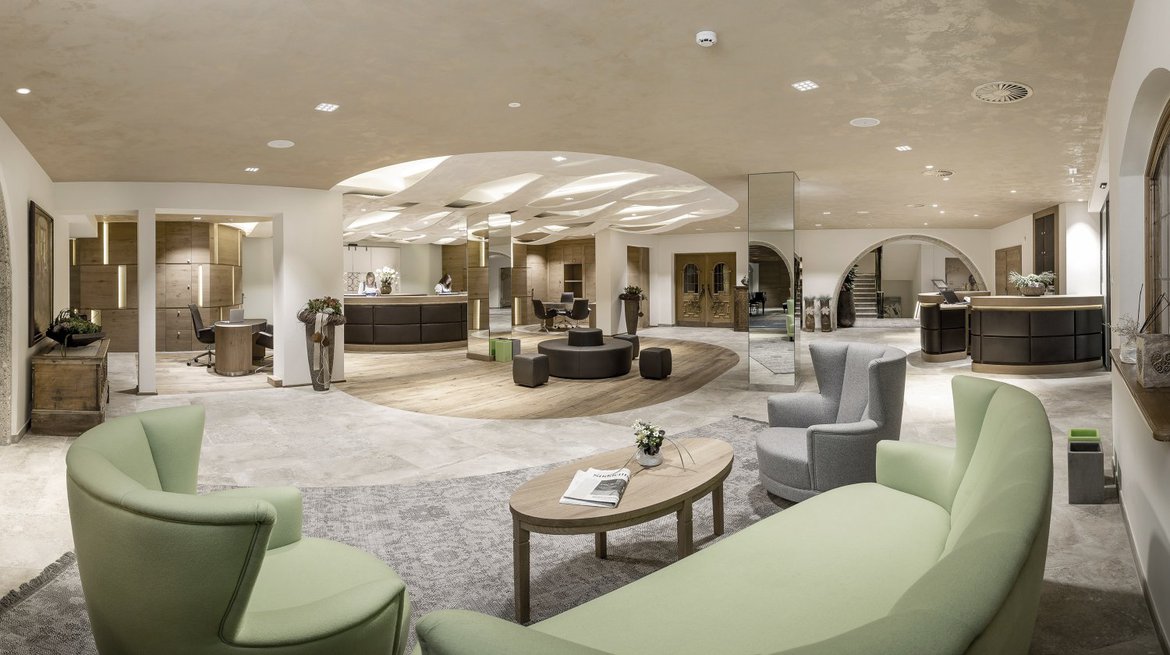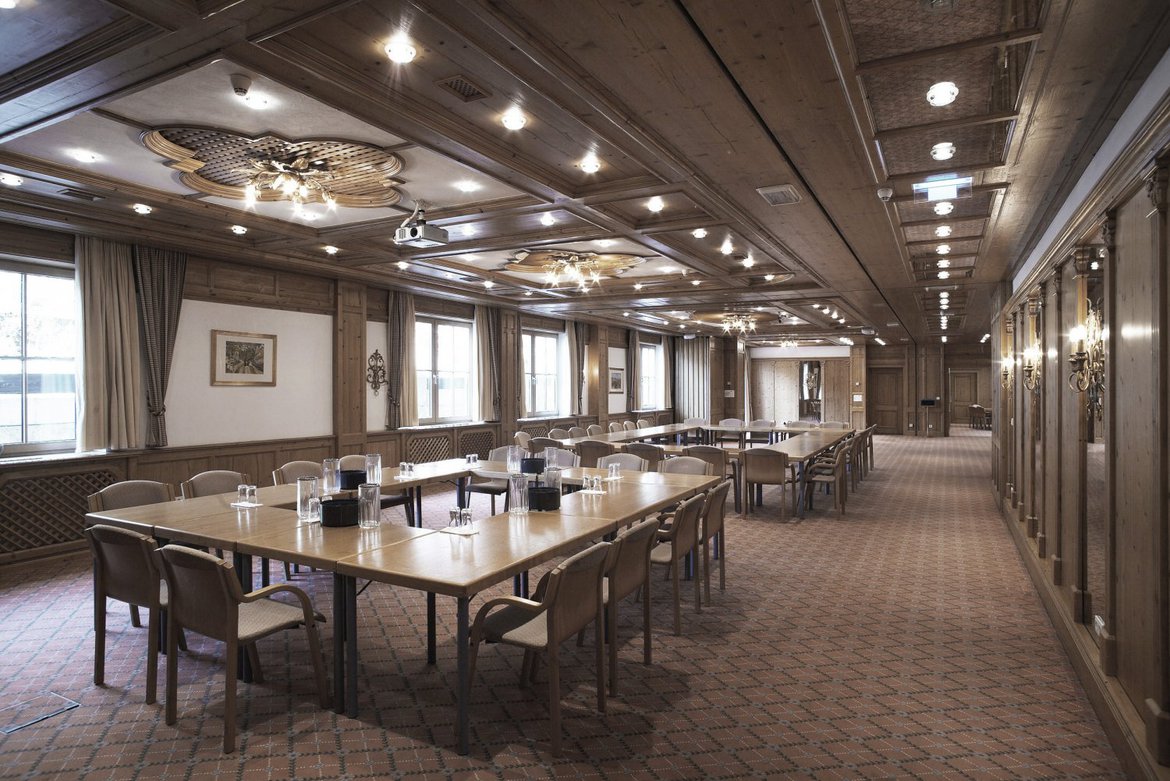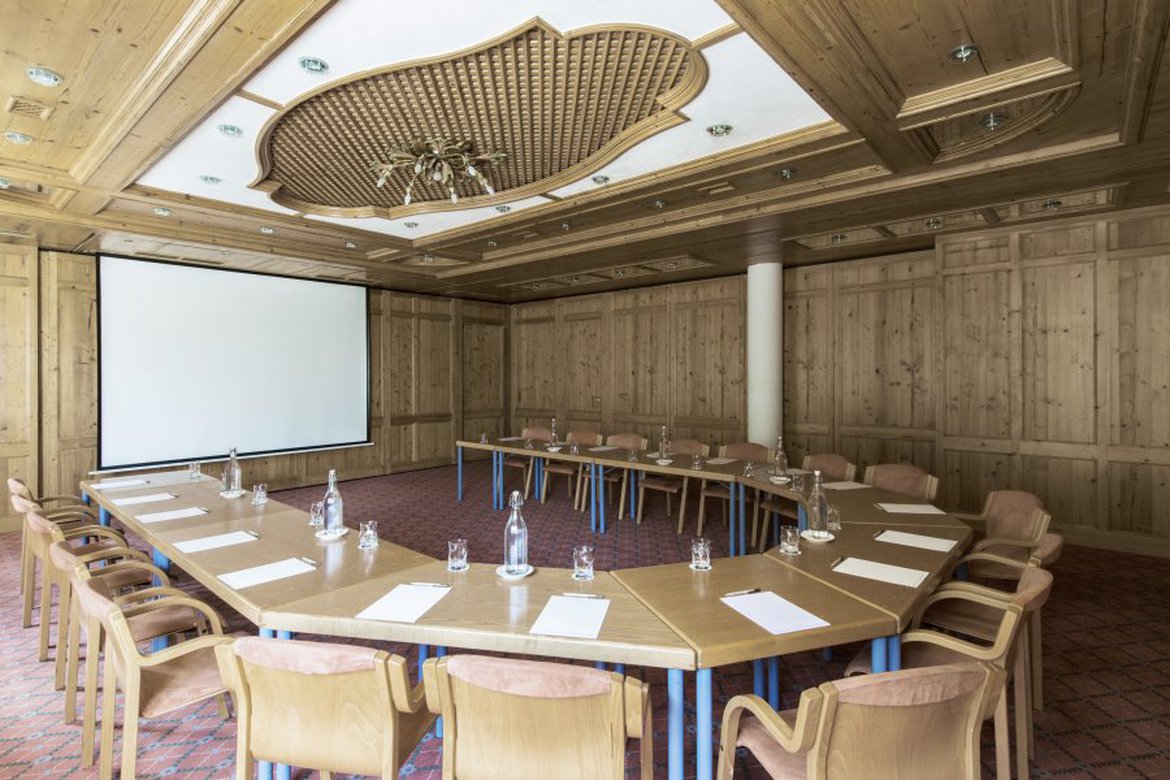Measuring and modelling brain states
3rd HBP Curriculum Workshop Series - Final workshop
28-29 March 2020 | Sölden, Austria
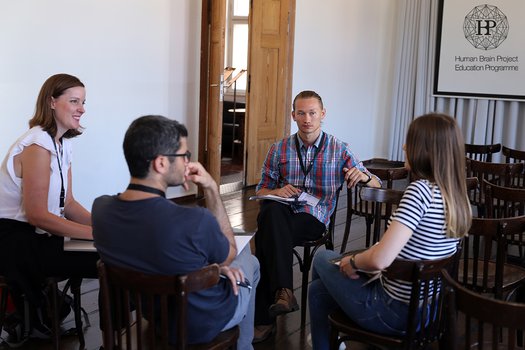
FAQs & ALL YOU NEED TO KNOW
The participation fee is 90 € and includes:
- Admission to all scientific sessions
- Coffee break, lunch break and drinks
The fee does not include travel and accommodation.
Participants of the Winter Conference can attend this workshop free of charge.
We offer 5 fee waivers. To apply, please send us an email.
The following conditions need to be fulfilled in order to be eligible for a fee waiver:
- full attendance of the workshop
- submission of an abstract for an oral presentation
- after-workshop survey completion
Airports
The closest international airport to Sölden is Innsbruck (Austria). Munich is an option if coming from overseas and you want to save an additional connecting flight within Europe to Innsbruck, but the transfer time from/to Munich is 3-4 hrs and the costs are higher than from Innsbruck.
Airport transfer Innsbruck
The most convenient way is to take a taxi; if you travel alone, it is also the most expensive one. You can, however, split the taxi fare from Innsbruck to Sölden among up to eight persons, depending on the size of the taxi.
Travel time: approx. 1 hour.
Public transportation (travel time approx. 2 hrs): By train from Innsbruck Main Railway Station to Ötztal Bahnhof, then by bus to Sölden (frequently during daytime). By bus from Innsbruck Main Railway Station directly to Sölden (several times daily).
Airport shuttles
>>online: Ötztal Shuttle (Innsbruck airport or Innsbruck main train station)
>>online: Four Seasons Travel (Munich airport) +43-512-584157 or office@airport-transfer.com
Shuttle transfer time from Munich approx. 3-4 hrs and from Innsbruck approx. 1 hr.
Travel by train
For train schedules (to Ötztal Bahnhof station) from Innsbruck or Munich on the Internet see Austrian Railways (www.oebb.at ) or German Railways (www.bahn.de).
From Ötztal Bahnhof station you can travel with public bus (45 minutes) or taxi (25 minutes) to Sölden.
Travel by car
Sölden can be reached from the Austrian motorway A12 (west, direction Bregenz, if coming from Germany or Italy or Eastern parts of Austria and Europe), take exit no. 123 (Ötztal) and drive south to Sölden. If coming from Switzerland, pick up A12 at Landeck and drive east, direction Innsbruck, and exit at exit no. 123 (Ötztal), and drive south to Sölden.
The road from the motorway to Sölden is well maintained and an easy drive. Be prepared, however, for winter conditions, as snowfall might occur, and special winter tires are obligatory.
Please note that the shortest road from Northern Italy (Bolzano - Merano - Passo Del Rombo (Timmelsjoch) - Sölden) is closed during winter until late May, and therefore you have to drive via Brennero - Innsbruck if coming from Italy.
If you would like to make a reservation at the meeting hotel please contact us via email.
Registered participants can book a room at special rates:
€ 195.00 per person & night (double occupancy)
€ 212.00 per person & night (single occupancy)
Alternative accommodation suggestions near the venue:
- Language:
The official language in Austria is German. Foreign languages, particularly English, are widely understood and spoken.
- Time zone:
Sölden is in the Central European Time Zone (CET = GMT / UCT + 1).
- Electric current:
Electricity is supplied at 230 volts (alternating current). Type F plugs (CEE 7/4, CEE 7/7) are used.
- Tap water:
Austria is famous for it's clean water so it is definitly safe to drink it directly out of the tap.
- What else to do in Sölden:
Sölden is a famous Alpine resort and will still have lots of snow by the date of the workshop. If you want to combine your workshop attendance with some winter sport like skiing at the glacier - bring your equipment and enjoy some snowy days in Tirol.
You can hand in an abstract with your application in order to present your research work in an oral presentation.
Please note that the information provided on this site has been obtained from several different sources and therefore the organisers cannot accept any responsibility for errors therein.
This workshop has been cancelled due to travel restrictions affecting numerous speakers and other registrants.
The final workshop of the 3rd HBP Curriculum Workshop Series invites researchers interested in measuring and modelling brain states at multiple scales. At the cellular level, the appearance of different brain states (such as wake, sleep, anesthesia) are reviewed at the scale of neurons, from extracellular recordings in both human and animal models. From a modelling perspective, workshop participants will learn how cellular data can be used to build model networks of spiking neurons and how mean-field techniques are used to derive population models of different brain states from those network models. Together, these techniques can bridge scales, from neurons to the whole brain, and provide an integrated view of brain states and their responsiveness.
Participation is open to the entire student community and early career researchers, regardless of whether they are affiliated with the Human Brain Project or not. It is aimed to offer equal opportunities for all early career researchers regardless of gender, age, origin, etc.
Early registration is recommended as the number of participants is limited.
Participation fees:
Regular fee: 90 €
This workshop is a satellite event to the 22nd International Neuroscience Winter Conference. Separate registration for both events is required. Attendees of the Winter Conference can attend this workshop free of charge. In order to register for free, please send an email with your registration ID from the conference to curriculum.edu@humanbrainproject.eu.
Workshop participants enrolled in a university programme are entitled to join the Winter Conference free of charge. Other workshop participants (non-students) can participate in the conference on special conditions.
Online registration closed. On-site registration possible!
Student presentations:
The workshop will offer the possibility of presenting your research in a brief oral presentation. Registrants who would like to present their work are required to submit an abstract. Abstracts can be submitted in Word format (max. 250 words excl. title and affiliations) via email to curriculum.edu@humanbrainproject.eu.
Download the preliminary programme:
![]() 3rd HBP Curriculum Workshop Series - Measuring and modelling brain states (2.0 MB)
3rd HBP Curriculum Workshop Series - Measuring and modelling brain states (2.0 MB)
PROGRAMME
Saturday 28 March 2020, from 1:00 pm
Welcome & introduction | 15 min
Brain states at the level of single neurons in mice | 60 min
Mavi Sanchez-Vives (University of Barcelona)
Optogenetic control of arousal state transitions | 60 min
Louis de Lecea (Stanford University)
Linking cellular levels and large-scales using mean-field models | 60 min
Alain Destexhe (Paris-Saclay University)
Modelling normal and pathological brain states at the whole-brain level | 60 min
Victor Jirsa (Aix-Marseille University)
Sunday 29 March 2020, until 3:00 pm
EEG global microstates as basic building blocks of brain information processing | 60 min
Thomas Koenig (University of Bern)
Student presentations | 60 min
Data-driven discovery of brain states | 60 min
Fede Raimondo (University of Liège)
Bistability, slow waves and complexity in physiological and pathological brain states | 60 min
Marcello Massimini (University of Milan)
Round table discussion | 30 min
This programme may be subject to change.
CONFIRMED SPEAKERS
Prof. de Lecea obtained his PhD degree from the University of Barcelona and moved to The Scripps Research Institute in 1992. He progressed through the ranks at Scripps and he moved to Stanford University in 2006, where he remains as a tenured Professor in the Department of Psychiatry and Behavioral Sciences. Dr. de Lecea’s work is based on the discovery of several neuropeptides with key roles in brain states. In particular, he first identified the Hypocretins (also known as orexins), two neuropeptides that have served as a “Rosetta stone” to identify the language of sleep/wake transitions. His laboratory was also first to implement optogenetic methods in vivo, in collaboration with Karl Deisseroth. Dr. de Lecea is one of the most cited authors in basic sleep research, and has served on multiple national and international committees and editorial boards. He is also recipient of several awards including Fullbright Senior Scholar, Peking University Fellow, NARSAD Distinguished Investigator, SRS Outstanding Research Achievement Award.
Lecture title: Optogenetic control of arousal state transitions
The arousal construct underlies a spectrum of behaviors that include sleep, exploration, feeding, sexual activity and adaptive stress. Pathological arousal conditions include stress, anxiety disorders, and addiction. In the past few years we have used optogenetics to interrogate neuronal circuits underlying transitions between arousal states. In particular, I will talk about how the hypocretin system, makes the decisions about when to mark the transition between sleep and wakefulness. The dynamics between arousal state transitions are also modulated by norepinephrine neurons in the locus coeruleus, histaminergic neurons in the hypothalamus, dopaminergic neurons in the mesencephalon and cholinergic neurons in the basal forebrain. I will talk about an attempt to model sleep/wake dynamics using probabilistic estimates of neurotransmitter function based on optogenetic stimulations. Examples of dysfunctional arousal circuits in the aging brain will also be presented and discussed.
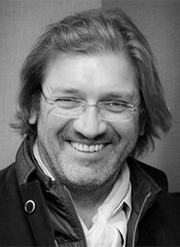
Viktor Jirsa is Director of the Inserm Institut de Neurosciences des Systèmes at Aix-Marseille-Université. Dr. Jirsa received his PhD in 1996 in Theoretical Physics and has contributed since then to the field of Theoretical Neuroscience through the development of realistic personalized brain network models. He co-leads the Theoretical Neuroscience Subsection of the Human Brain Project. His work has contributed to a better understanding of the network principles underlying brain dynamics in rest, aging, and epilepsy. He is mostly known for the neuroinformatics platform The Virtual Brain (http:www.thevirtualbrain.org). Dr. Jirsa has received various international and national awards and published more than 160 scientific articles, including the Handbook of Brain Connectivity.
Lecture title: Modelling normal and pathological brain states at the whole-brain level
Pattern formation in physics, biology and chemistry is based on dynamic principles of self-organization. Pattern formation phenomena in brain research are no exception and form the basis of our current understanding of cognitive brain functions. Perception and motor behavior emerge together with neuroelectrical and chemical activity, but so do epilepsy and neurodegenerative diseases. This pattern formation in the brain results from the interaction of billions of neurons over several time and space scales, but is typically measured in humans only on very large scales such as in magnetic resonance imaging or electroencephalography (EEG). In order to bridge the gap to clinical applications, it is therefore essential to model the traverse of scales using computer simulations and advanced mathematics, supported by individual state-of-the-art brain imaging. This combination allows to create autonomous brain models of individual patients and to test concrete clinical questions, possibly even to develop new therapies. Especially in epilepsy, these modern approaches are applied and enable the development of novel surgical interventions.
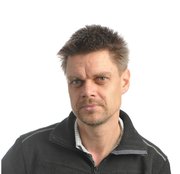 Thomas Koenig studied Behavioral Biology at the Swiss Federal Institute of Technology (ETH) in Zurich, where he also completed his PhD in Neuroscience in the laboratory of Prof. Dietrich Lehmann in 1995. He then worked as post‐doc at the KEY Institute for Brain‐Mind Research at the University Hospital of Psychiatry in Zurich. In 1999, he was a SNF sponsored post‐doctoral fellow in New York (Prof. Roy John) and Havana (Prof. Pedro Valdes). In 2000, he has appointed to his current position as the head of the EEG laboratories at the University Hospital of Psychiatry in Bern, Switzerland. He was habilitated there in 2005 and became associate professor at the medical faculty of the University of Bern in 2011.
Thomas Koenig studied Behavioral Biology at the Swiss Federal Institute of Technology (ETH) in Zurich, where he also completed his PhD in Neuroscience in the laboratory of Prof. Dietrich Lehmann in 1995. He then worked as post‐doc at the KEY Institute for Brain‐Mind Research at the University Hospital of Psychiatry in Zurich. In 1999, he was a SNF sponsored post‐doctoral fellow in New York (Prof. Roy John) and Havana (Prof. Pedro Valdes). In 2000, he has appointed to his current position as the head of the EEG laboratories at the University Hospital of Psychiatry in Bern, Switzerland. He was habilitated there in 2005 and became associate professor at the medical faculty of the University of Bern in 2011.
His research activity has mainly focused on linking mental processes and experiences to EEG data, which includes both the development of theoretical models and the corresponding analysis tools, as well as empirical studies in healthy and mentally ill subjects. Methods and theory wise, he has been one of the key promotors of the EEG microstate methodology that is receiving increasing attention in the EEG community, and contributed a series of software tools to conduct such analyses.
Thomas Koenig has published over 140 scientific articles and book chapters. He is associate editor for Brain Topography, Brain Connectivity, Neuropsychobiology, EEG and Clinical Neuroscience and Frontiers in Behavioral Neuroscience. In addition, he is member of the executive committees of several research societies and was the president of the International Society for Brain Electromagnetic Topography from 2014 to 2019. He organized a series of well‐attended scientific meeting, the last ones have been the meeting “Resting‐states and state‐dependent information processing in health and disease” at the CSF in 2014 and the 3rd International Conference on Basic and Clinical Multimodal Imaging in 2017 in Bern. In 2009, he received the Theodor‐Kocher Prize of the University of Bern for excellent young academics.
As part of his commitment to equal opportunities and to his family, he has been working part‐time since 1995, which has later allowed him to study philosophy at the University of Bern. He obtained his bachelor there in 2017, and is currently working on his master thesis in the field of Philosophy of Mind. He is married and father of two now adult daughters.
Lecture title: EEG global microstates as basic building blocks of brain information processing
The phenomenology of the spatial dynamics of resting state EEG can be described surprisingly well in terms of microstates; i.e. as a non-random and non-overlapping sequence of a few and transiently stable prototypical scalp field configurations, constituting a microstate. From a physical point of view, this observation can only be reasonably explained by the assumption that within a single microstate, the predominant part of the EEG sources oscillates either in phase or in antiphase to the other sources. According to Fries (2005) model of communication through coherence, such relatively slow in- and antiphase oscillations temporally align or misalign neuronal excitability and can therefore drastically alter the flow of information among brain regions. Thus, from a mechanistic point of view, the switching between microstates may represent a global, flexible and adaptive gating of communication between large-scale networks. Finally, Tonoi’s information integration theory of consciousness (2004) states that “the quantity of consciousness corresponds to the capacity of a system to integrate information” and that “the quality of consciousness is determined by the informational relationships among the elements of a complex”. As microstates may dynamically switch these relationships through the gating of information flow, microstates may dynamically modify the quantity and quality of conscious experience. In my contribution, I will carefully review the methodology, the empirical findings and the theoretical background behind the microstate model, critically evaluate the claims that have been made based on it, and outline its possible extensions into the time-frequency domain.
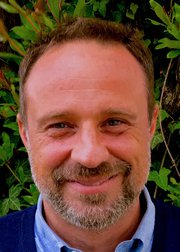 Marcello Massimini was trained as a medical doctor and devoted his career so far to understanding howneuronal activity and connectivity change across different brain states, such as wakefulness, sleep,anesthesia and coma. His research path spanned from intracellular recordings in animal models duringsleep and anesthesia to multimodal (EEG, TMS, MRI) recordings in patients emerging from coma. Overthe last 10 years Marcello Massimini has focused on connecting concepts from basic neurophysiologyand theoretical neuroscienceto the bedside of brain injured patients. In doing so, he has establishedhimself among the world experts in field of the neurophysiology of consciousness and its disordersfollowing brain damage. Along this line, he has recently coordinated (together with Nikolas Schiff atCornell University, NY) a large international effortendorsed by the International Federation of ClinicalNeurophysiologyto produce the latestrecommendations forthe use and interpretation of spontaneousand evoked EEGon coma (inpress).Prof. Massimini is currently holding a Full Professor of Human Physiology at the University of Milan.He is Senior Fellow at the Canadian Institute for Advanced Research (CIFAR) and scientificcoordinator at the Department of Severe Brain Injury, IRCCS Fondazione Don Gnocchi, Milan.
Marcello Massimini was trained as a medical doctor and devoted his career so far to understanding howneuronal activity and connectivity change across different brain states, such as wakefulness, sleep,anesthesia and coma. His research path spanned from intracellular recordings in animal models duringsleep and anesthesia to multimodal (EEG, TMS, MRI) recordings in patients emerging from coma. Overthe last 10 years Marcello Massimini has focused on connecting concepts from basic neurophysiologyand theoretical neuroscienceto the bedside of brain injured patients. In doing so, he has establishedhimself among the world experts in field of the neurophysiology of consciousness and its disordersfollowing brain damage. Along this line, he has recently coordinated (together with Nikolas Schiff atCornell University, NY) a large international effortendorsed by the International Federation of ClinicalNeurophysiologyto produce the latestrecommendations forthe use and interpretation of spontaneousand evoked EEGon coma (inpress).Prof. Massimini is currently holding a Full Professor of Human Physiology at the University of Milan.He is Senior Fellow at the Canadian Institute for Advanced Research (CIFAR) and scientificcoordinator at the Department of Severe Brain Injury, IRCCS Fondazione Don Gnocchi, Milan.
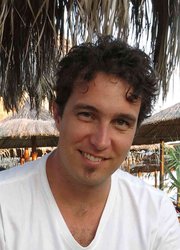 Fede Raimondo is a post-doctoral WBI fellow at the University of Liège in Belgium. He is a Computer Scientist with a particular interest in the study of what he considers to be the most beautifully engineered computing architecture: the human brain. He got a bachelor and masters in Computer Sciences at the University of Buenos Aires (Argentina), which led him to a joint PhD between the University of Buenos Aires (computer sciences) and the Sorbonne University (cognitive neurosciences, France). His research focuses on the development of algorithms and processing of high volumes of data in order to use state-of-the-art computing technology to answer scientific questions about human consciousness and cognition.
Fede Raimondo is a post-doctoral WBI fellow at the University of Liège in Belgium. He is a Computer Scientist with a particular interest in the study of what he considers to be the most beautifully engineered computing architecture: the human brain. He got a bachelor and masters in Computer Sciences at the University of Buenos Aires (Argentina), which led him to a joint PhD between the University of Buenos Aires (computer sciences) and the Sorbonne University (cognitive neurosciences, France). His research focuses on the development of algorithms and processing of high volumes of data in order to use state-of-the-art computing technology to answer scientific questions about human consciousness and cognition.
Lecture title: Data-driven discovery of brain states
The human brain, through its neural activation and synchronization patterns, can be interpreted as a quasi-(in)finite-state machine, i.e. characterized by states and transitions among them. Depending on the granularity, each state can represent the execution of (or capacity to execute) a specific task. To determine the cardinality of this particular state-machine as well as the characteristics of each state and their transition function, seems to be an impossible job. However, recent advances in artificial intelligence and neuroimaging have been proven useful methodologies for the exploration of brain states. In this talk, I will introduce several data-driven methodologies for the discovery of brain states at different granularities. From global-states of consciousness to responsiveness during non-REM sleep, multivariate characterization and decoding of brain signals can serve as proxies for the determination of distinct, yet similar, brain states.
SCIENTIFIC CHAIR
Alain Destexhe | Paris-Saclay University, France
ORGANISERS
Sylvia Aßlaber | MUI
Judith Kathrein | MUI
Alois Saria | MUI
ABOUT THE VENUE
HOTEL DAS CENTRAL
Auweg 3
6450 Sölden
Austria
Das Central is a 5-star SPA hotel in one of the largest ski resorts in Austria with a restaurant that received prestigious awards by international restaurant guides and fully equipped conference rooms.


